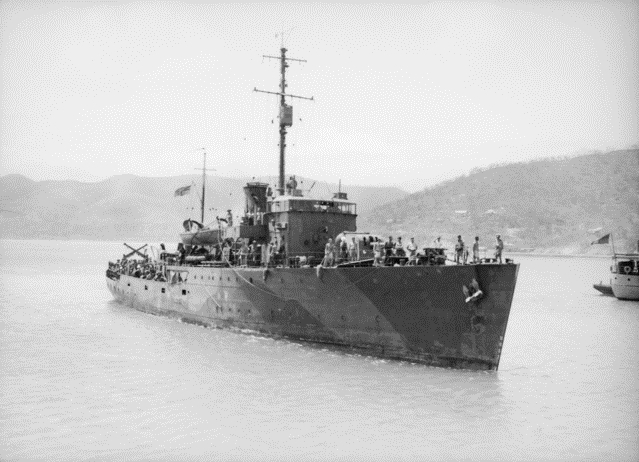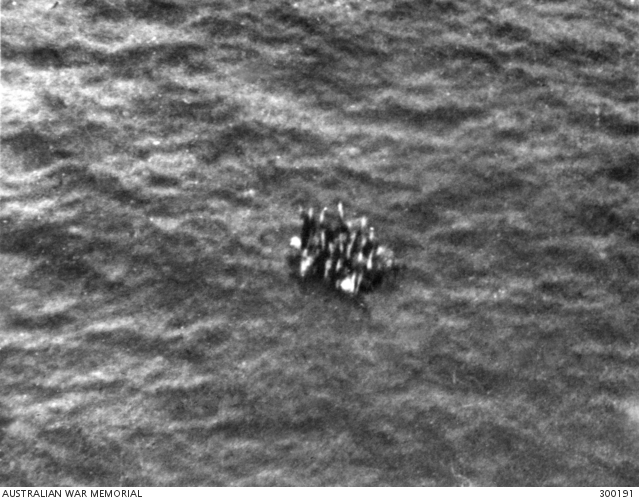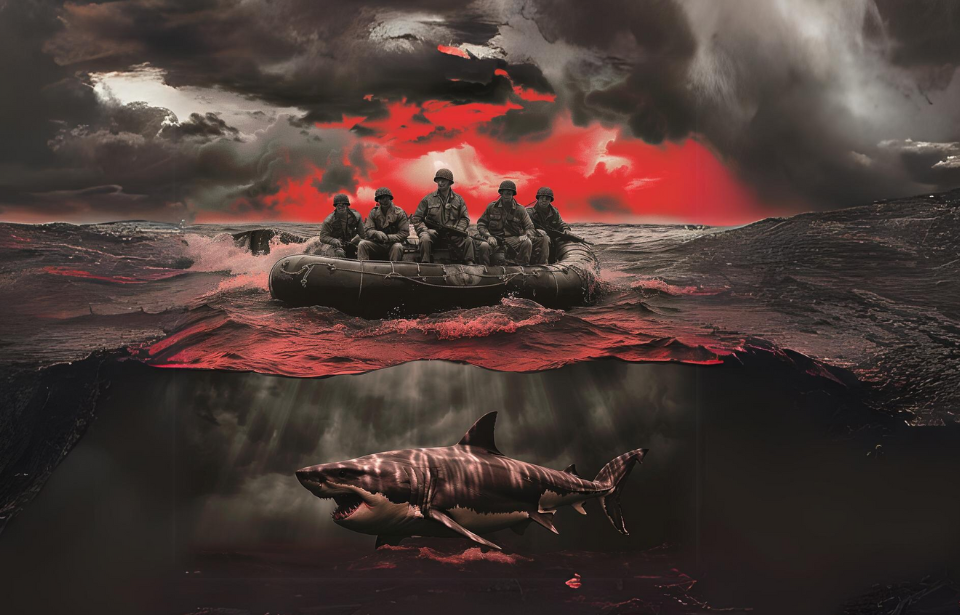Shark films are a staple of the horror genre and one Australian filmmaker is looking to meld this style of film with the war genre. Kiah Roache-Turner is the mind behind Beast of War, a World War II-era movie that’s loosely inspired by the loss of the HMAS Armidale (J240) in December 1942.

As reported by Deadline, the synopsis for Beast of War reads, “1942. A warship carries hundreds of Australian soldiers across the Timor Sea to the frontline of WW2. Suddenly, Japanese fighter jets scream out of the sky, and within minutes the ocean becomes a hell of steel, fire, oil, and blood.
“With the vessel destroyed, a handful of soldiers build a makeshift raft from floating debris as they cling to their lives. Tensions run high between the hot-headed and terrified young men, as they band together in an effort to survive. But their biggest battle is yet to come. In the dark below, a great white shark hunts in the wreckage and is drawn to the smell of fresh blood in the water.”
While looking to create something similar to USS Indianapolis: Man of Courage (2016), about the loss of the American heavy cruiser to a Japanese submarine in July 1945, Roache-Turner didn’t have the budget.
“I thought it had to be Australian, so I did about two seconds of Google searching and found the story of the HMAS Armidale that sank off the coast of Western Australia, halfway between Darwin and Timor,” he told The Hollywood Reporter. “It was the same story – ship goes in the water, no distress signal sent, lots of poor Aussie guys doing amazingly heroic things, some were killed by sharks and many were never seen again.
“But I got to the end of the research and realized I couldn’t do a historically accurate version as it would just be too bleak,” he added.

The HMAS Armidale was an Australian Bathurst-class corvette that served in the Pacific Theater during the Second World War. She began her service escorting convoys, before being transferred to Darwin in October 1942. Two months later, she was sunk by the Japanese.
On November 29, 1942, Armidale, her sister ship HMAS Castlemaine (J244) and the auxiliary patrol boat HMAS Kuru departed Darwin for Betano Bay, charged with evacuating Commandos with the 2/2nd Independent Company, 100 Portuguese civilians and a group of Dutch soldiers. The group was to also deliver a relief contingent of Australian soldiers and members of the Royal Netherlands East Indies Army.
The following day, at around 9:00 AM, the trio of ships were spotted by a Japanese reconnaissance aircraft, prompting the group to request the mission be aborted – the risk of enemy attack was too high. They were denied, with Commodore Cuthbert Pope, Naval Officer in Charge Darwin, saying fighter support would be en route, in the form of Bristol Beaufighters. The aircraft chased off an attacking group of enemy bombers around midday, after which they returned to the Australian mainland.
At 2:30 AM on December 1, 1942, Castlemaine and Armidale reached Betano Bay, but without Kuru opted to retreat out to sea. The auxiliary patrol boat was later sighted, collected the Portuguese civilians and set off for Darwin, transferring the civilians to Castlemaine along the way. As the lead vessel, the corvette’s commanding officer ordered Kuru and Armidale back to Betano Bay to drop off the relief force.

By 1:00 PM that afternoon, the HMAS Armidale was under attack, with two Japanese dive-bombers damaging the corvette’s guns. The next hour saw additional attacks, inflicting major damage to the vessel and killing several members of her crew.
With no choice but to abandon ship, those still alive jumped into the water, while the Japanese aircraft, low on fuel, returned to base. Two boats had survived the sinking, and the surviving crewmen who’d been unable to fit in the craft fashioned a raft from debris floating in the water. One of the boats set off for Darwin, in the hopes of finding rescuers, prompting an aerial search that saw those aboard the second boat also rescued.
Unfortunately, while sighted, the raft became lost and was never seen again. The official search effort was called off on December 13, 1942. Some 40 crewmen and 60 members of the Royal Netherlands East Indies Army lost their lives.

More from us: Kate Winslet Starring As Famed War Correspondent Lee Miller in Upcoming Film
Beast of War is slated to begin production in Australia and Malta in 2024. It’s produced by Blake Northfield of Bronte Pictures and Christ Brown of Pictures in Paradise. Paul Trefry, CreatureNFX director, is charged with creating the creature effects. Little else is known about the production, including who’ll be acting in it and its anticipated release date.
